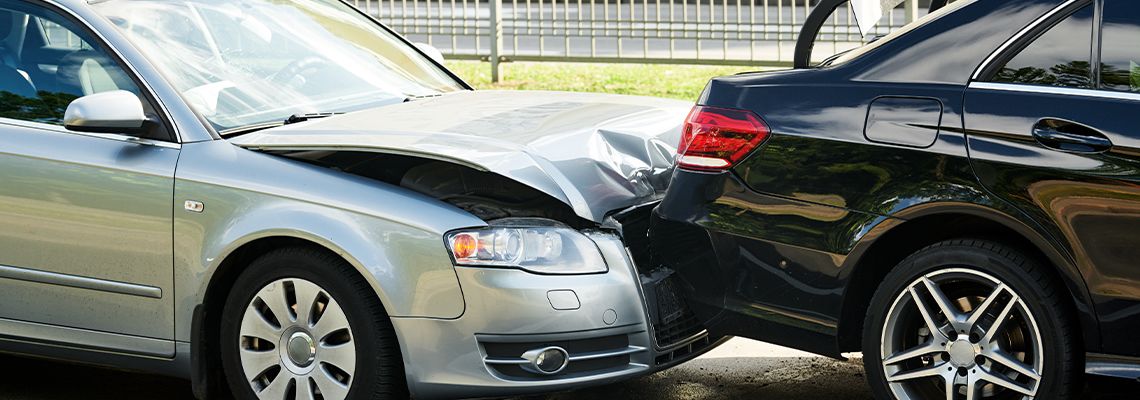
How Comparative Negligence Affects Car Accident Compensation Claims
At Mook Law Firm LLC, we work with clients every day who’ve been injured in car accidents across Missouri. One of the most important legal concepts in these cases is comparative negligence. It directly affects how much compensation an injured person can recover—and in some cases, whether they can recover anything at all.
Missouri follows a pure comparative negligence rule, which means your compensation can be reduced based on your share of fault. This standard applies to nearly every personal injury case involving a motor vehicle collision.
Whether you’re hit at an intersection, sideswiped on the highway, or involved in a rear-end crash, understanding how comparative negligence works is key to protecting your rights.
In this article, we’ll break down how comparative negligence is applied under Missouri car accident law, how fault is determined, what types of evidence matter, and how we help clients build stronger claims in light of shared responsibility.
What Is Comparative Negligence?
Comparative negligence is a legal doctrine that assigns percentages of fault to each party involved in an accident. In Missouri, even if you’re partly responsible for the crash, you may still recover damages—as long as the other party is also at fault.
Let’s say you're 20% at fault for a crash and your damages total $100,000. Under Missouri’s approach, your compensation would be reduced by 20%, so you’d receive $80,000. This system contrasts with some states that bar recovery if your share of fault is over 50%.
Missouri’s rule is more lenient, which makes car accident law in this state more favorable for partially at-fault drivers.
We routinely apply this rule to help our clients recover fair compensation—even when insurance companies argue they were partly to blame.
How Fault Is Determined in Missouri
Fault in Missouri car accident cases is based on the facts. Police reports, witness statements, physical damage, surveillance footage, and expert analysis all contribute to assigning responsibility. In most cases, insurance companies will try to determine fault early. If the case goes to trial, a judge or jury will ultimately decide.
As attorneys practicing car accident law, we don’t rely solely on the other party’s version of events or the initial police report. We conduct independent investigations, speak with witnesses, collect photographs and scene data, and reconstruct how the crash occurred.
Every percentage point matters, and the more fault that’s shifted to the other driver, the higher your compensation may be.
Insurance companies often try to overstate a claimant’s share of blame to reduce what they have to pay. That’s why it’s important to have legal representation that actively challenges those assumptions with evidence.
Real-World Example of Comparative Negligence
Suppose you’re driving slightly over the speed limit when another driver runs a red light and crashes into your vehicle. The other driver clearly violated traffic law, but your speed may have played a small part in how severe the crash was. The court may decide you were 10% at fault, and the other driver was 90% responsible.
Let’s say you suffer $50,000 in damages. Your recovery would be reduced by 10%, and you’d be awarded $45,000. This outcome may seem frustrating, but it’s far better than walking away with nothing—and without a proper legal argument, some insurers might try to blame you even more.
We’ve worked with clients in similar situations who were initially told they had no case. With the right evidence and a solid presentation of facts, they ended up receiving fair compensation under Missouri car accident law.
Why Comparative Negligence Matters for Injury Claims
Comparative negligence comes up in almost every car accident injury claim. It affects not only whether you recover damages but also how much those damages will be. As your lawyers, we prepare every case with this issue in mind.
Insurance companies often make early settlement offers based on their interpretation of fault. If they believe you were 50% at fault, they may offer only half of what your case is worth. Without knowing how the law works, some victims accept low settlements and lose thousands of dollars.
That’s why we always advise our clients to speak with us before talking to the other party’s insurance company or giving a recorded statement. Your words can be twisted into admissions of fault, even when they’re taken out of context.
Key Factors That Influence Fault in Missouri
Missouri law doesn’t have a fixed formula for assigning fault. Instead, judges and juries consider all the circumstances. We’ve identified several recurring factors that play a major part in determining fault and liability.
Traffic violations: Speeding, running a red light, failing to yield, and driving under the influence are often strong indicators of fault.
Right of way: Determining who had the right of way at the time of the collision plays a major role in assessing liability.
Distractions: Use of a phone, eating while driving, or other distracted behaviors can reduce a driver’s credibility and increase fault.
Vehicle condition: If one vehicle had defective brakes, worn tires, or other mechanical issues, that may shift some blame.
Road conditions and weather: Wet roads, ice, or fog can impact braking distance and reaction time. Failure to adjust to these conditions can lead to partial fault.
Witness statements: Neutral third-party accounts are often more persuasive than conflicting claims between drivers.
Surveillance or dashcam footage: Objective video can be one of the strongest forms of evidence, capturing the crash in real time.
Police report conclusions: While not legally binding, a police report that assigns fault can influence insurance negotiations and trial strategies.
Statements made at the scene: Apologizing or admitting fault immediately after a crash can come back to hurt your claim—even if you didn’t mean it that way.
How We Use Car Accident Law to Maximize Compensation
At Mook Law Firm LLC, we don’t let our clients get pushed into low settlements based on questionable fault claims. We apply every aspect of Missouri’s car accident law to argue for a more favorable fault allocation.
That includes reviewing the evidence, presenting accident reconstructions, and disputing any exaggerated blame placed on our clients.
Our focus is always on getting full compensation for medical expenses, lost wages, pain and suffering, vehicle damage, and future care needs. Comparative negligence doesn’t mean you give up—it means you fight for every percentage that can be shifted to the party who caused the crash.
When we’re involved early, we help preserve evidence, handle communications with insurers, and prevent clients from making avoidable mistakes.
How Insurance Companies Handle Shared Fault
In Missouri, insurance adjusters regularly use comparative negligence to justify lower payouts. Some of them act as though the issue is already settled, stating that you were 30% or 40% at fault without offering proof. That’s not how car accident law works, and we make that clear when representing injured clients.
We challenge these assessments and push for fair adjustments based on facts. Insurers aren’t the final word on fault—juries are. If they know we’re prepared to go to court, they’re more likely to settle on reasonable terms.
That leverage comes from a deep understanding of Missouri car accident law and the evidence that drives successful claims.
Comparative Negligence in Multi-Vehicle Crashes
In pileups or chain-reaction collisions, fault can be shared among three or more drivers. Missouri law allows a jury to divide fault percentages among all parties, and those numbers must add up to 100%.
We’ve handled cases where several insurance companies were involved, each blaming the others. In these situations, we focus on proving that our client’s actions played the smallest possible part—or none at all.
Strong documentation, vehicle damage analysis, and accident reconstructions become even more valuable when multiple drivers are involved.
What to Do After a Crash to Protect Your Claim
The moments after a crash are often confusing and overwhelming, but what you do during that time can affect your claim. We always advise our clients to avoid making statements about fault, to document everything with photos and video, and to contact a lawyer as soon as possible.
Missouri’s comparative negligence system allows you to recover even if you’re partly to blame—but only if you can prove it. Every shred of evidence helps.
We work with medical providers, crash investigators, and sometimes reconstruction specialists to develop a full picture of what happened and how the other driver’s actions caused your injuries.
Final Thoughts
At Mook Law Firm LLC, we know how important it is to get compensation after a serious crash. We are proud to serve Kansas City, Missouri, and surrounding communities. Call today.

